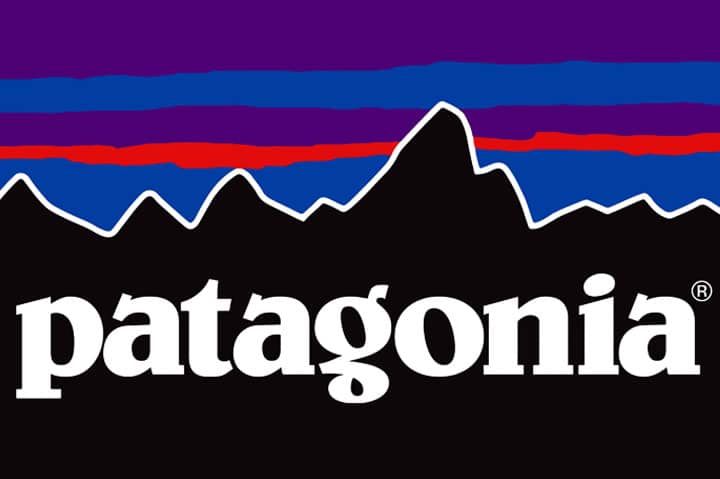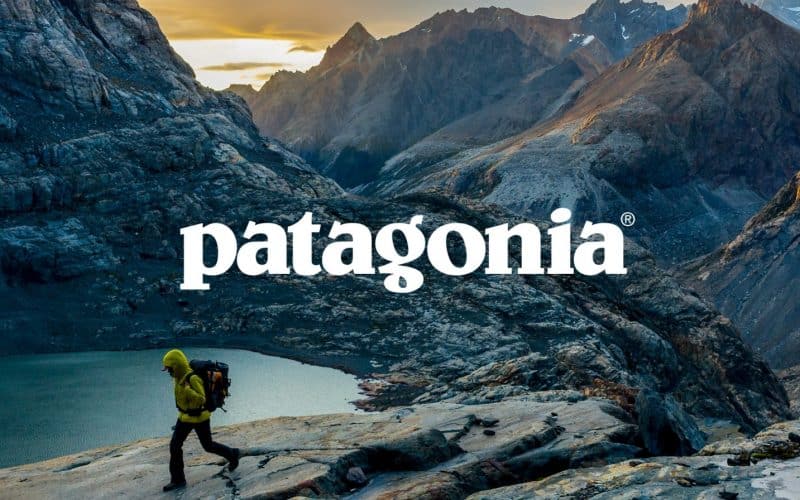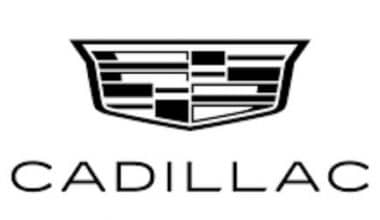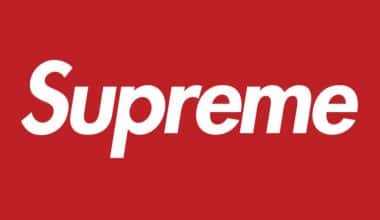Some companies have fantastic-sounding values and mission statements. They make grand claims and pretend to want to do good. Make a difference for the world and their fellow man.
Patagonia, a clothing company brand founded in Ventura, California, on the other hand, lives and breathes its mission statement: “Build the finest product, do no unnecessary harm, utilize business to inspire and implement solutions to the environmental crisis.”
One of the numerous quotes from founder Yvon Chouinard, which appeared in an interview after Patagonia placed this full-page advertisement in the New York Times:
“You hear phrases like ‘reuse, recycle,’ and so on. You must also consider ‘refuse.’ Refuse to purchase something. “If you don’t need it, don’t buy it,” Chouinard remarked in an interview following the publication of the advertisement. He mentioned that the shirt he was wearing was more than ten years old.
You hear phrases like ‘reuse, recycle,’ and so on. You must also consider ‘refuse.’ Refuse to purchase something. “If you don’t need it, don’t buy it,”
Yvon Chouinard, Patagonia Founder
Patagonia clothing is slightly more expensive than other outdoor brands due to the materials used (organic cotton costs more than non-organic cotton), but for good cause, they come with a lifetime guarantee. In 2015, they also developed the Worn Wear Wagon, a mobile repair business that traveled the United States for free, repairing people’s clothing. Soon after, they began selling used gear in stores alongside new lines.
Patagonia, which employs over 2,000 people worldwide in eight offices and generates $600 million in revenue, is clearly a company worth studying more about. So, what is the brand’s history?
Patagonia Brand History: Founder Yvon Chouinard (1938 till date)
Yvon Chouinard developed a clothing empire despite his dislike for the environment and a desire to create high-quality things that improve humanity’s relationship with it. Patagonia’s most enduring legacy may not be its clothing, but rather its entire brand philosophy.
In his autobiography, Let My People Go Surfing: The Education of a Reluctant Businessman, Patagonia founder Yvon Chouinard writes, “No young kid growing up ever thinks of eventually being a businessman.” “The corporate world’s Koch brothers and Donald Trumps are heroes to no one save other businessmen with similar principles.” “When I grew up, I wanted to be a fur trapper,” he continues.
Gerard Chouinard, Chouinard’s father, was a jack of all trades, a Québécois from a farming family who did everything from plumbing to plastering and carpentry and even worked as an electrician. He moved down to Lisbon, Maine, home to a thriving French-Canadian population, to spend time with his family.
There, a young Yvon Chouinard claims to have “learned to climb before I could walk,” and he developed an early love of the outdoors, particularly fishing. Chouinard may have inherited his father’s incredible work ethic, but he attributes his adventurous temperament to his mother, Yvonne, who persuaded the family to relocate to California in 1946. They ended up in Burbank, California after auctioning off most of their belongings, including furniture created by Gerard.
What is Patagonia’s reputation for?
Patagonia is a clothing business noted for its high-end outdoor wear and environmental sustainability initiatives. Offering durable goods has contributed to the company’s continued expansion.
Is Patagonia a good brand?
Patagonia is a well-known brand for a reason. With high-quality apparel and accessories and several sustainability initiatives, their brand is easy to adore. However, Patagonia’s exorbitant prices make it difficult for budget-conscious travelers to enjoy their products.
What organization owns Patagonia?
In September 2022, Chouinard handed ownership of Patagonia to the Patagonia Purpose Trust, a family- and advisor-administered trust. Chouinard’s stated objective was to use earnings to combat climate change and preserve land.
Patagonia Brand History: Equipment Manufacturing
Yvon Chouinard’s passion for the outdoors and climbing only grew stronger on the West Coast. But he couldn’t find any climbing equipment that met his requirements. So, at the age of 19, he began manufacturing it himself, following in his father’s footsteps.
Chouinard Equipment was founded in 1964 by him and Tom Frost, an aviation engineer. They specialized in high-quality pitons, which are sharp metal spikes hammered into rock faces as climbing aids. Frost and Chouinard devised the Realized Ultimate Reality Piton (RURP) in 1959, which is about the size of a postage stamp.
By the 1970s, Chouinard Equipment was turning about $400,000 per year, but that came at a price Chouinard wasn’t ready to pay. The climbing spikes that accounted for 70% of their revenue had long-term negative consequences on the granite surfaces they were employed on, filling them with holes and causing them to split.
Chouinard, realizing this, exited the industry – a dangerous move — and worked to find a better alternative. His solution: lightweight aluminum nuts that could be inserted into existing rock fissures and then readily removed. He began touting a movement he called “clean climbing,” raising awareness about how climbers could take better care of the environment they loved so much.
The new products had names like Hexentrics and Stoppers. He began touting a movement he called “clean climbing,” raising awareness about how climbers could take better care of the environment they loved so much.
Patagonia Brand History: Clothings Manufacturing
Although Patagonia has never collaborated with another company, its consistency in focus, brand vision, and quality product have earned it a following in fashion and streetwear circles.
Patagonia, well renowned for its clothing and gear, was founded during this time period. Rugby shirts were among the first items Chouinard marketed. He discovered them in Scotland and began importing them because the heavyweight fabric was sturdy to climb in, ventilated better than the ordinary Oxford shirt, and the collar was excellent for keeping waist pack slings from digging into the neck.
Chouinard decided to start creating his own clothing (it still creates rugby shirts like the Sender today), and by 1973, Patagonia was created in the back of a meatpacking facility in Ventura, California, where the company offices remain today. Chouinard’s climbing innovations are still available today under the label Black Diamond Equipment, thanks to the 1989 purchase of the Chouinard Equipment Company by a group of former Chouinard workers.
Why is Patagonia so popular?
Patagonia is famous across the world due to its sceneries, extensive forests, natural reserves, national parks, glaciers, and unique animals. Patagonia is an area comprised of numerous provinces, each with its own unique charms.
Patagonia History: Brand Naming and Significance
The name Patagonia is derived from the hilly region of South America that contains the southern half of the Andes mountains. The logo is inspired by the oscillating peaks of Monte Fitz Roy. This remains one of the most difficult mountains to climb – though Chouinard did so in 1968, as portrayed in the film Fitzroy. Patagonia’s logo, like The North Face’s homage to Yosemite and El Capitan, is intended to highlight the products’ capacity to resist the hardest terrains and situations. The Pile Fleece jacket, inspired by the tough gear of fishermen, was one of the company’s first coats, released in 1977. It was an essential cold-weather coat due to its high neck and shearling material.
Patagonia investigated more sustainable materials and techniques of manufacture in the 1980s, including organic cotton, hemp, polyethylene terephthalate, or PET. They developed a way to recycle 25 plastic bottles into one fleece product. This resulted in the introduction of Synchilla, one of Patagonia’s hallmark materials that best embodies the company’s objective to manufacture high-quality products at a lower environmental cost. This also resulted in the Retro-X collection of recycled fleece jackets and vests, which included contrasting colors, a chest pocket, and side hand warmer pockets. Most importantly, Synchilla did not pill like its forefathers.
Patagonia Brand Strengths
However, beyond the things that customers purchase, Patagonia’s greatest strength is in informing them about what they are purchasing. Patagonia has used its platform to raise awareness and activism for environmental issues, establishing a pioneering paradigm in brand transparency. This includes a website called The Footprint Chronicles, books such as Chouinard’s memoirs and The Responsible Company, as well as catalogs and advertising campaigns.
Patagonia began contributing 10% of its income to grassroots organizations as early as 1986. In 2011, the company launched the “Common Threads” initiative, encouraging consumers to send back well-worn clothing to be repaired and refurbished, while also running an ad page on Black Friday — one of the busiest shopping days in North America — to persuade people not to buy anything they don’t need. The “Don’t Buy This Jacket” campaign stoked customer sentiment and aided Patagonia’s sales inadvertently. Patagonia has recently filed a lawsuit against the Trump administration. This is in reaction to a decision to reduce the size of the Bears Ears and Grand Staircase-Escalante monuments.
Despite the fact that the brand has never done an external partnership, its concentration, brand vision, and superb product have garnered it a following in fashion and streetwear circles. Supreme paid homage to Patagonia’s Monte Fitz Roy logo in 1998, substituting the New York City skyline for the mountain peaks, and its fleece jackets have been cited by fashion designers such as Louis Vuitton’s former menswear director Kim Jones and cult menswear designer Patrik Ervell. But it’s evident that if the brand had its way, the way it treats the environment and its people would be its lasting legacy, two things that the entire fashion business could benefit from adopting.
Timeline of Patagonia Company History
- 1976: A tag with the now-iconic Patagonia Fitz Roy logo, originally seen in the Spring 1976 collection.
- 1977: Though Chouinard designed outdoor clothing throughout the 1970s, it was the 1977 release of the iconic Pile Fleece jacket that launched Patagonia.
- 1981: Patagonia and Chouinard Equipment were merged into Great Pacific Iron Works in 1981.
- 1984: Chouinard was renamed Great Pacific Iron Works Lost Arrow Corporation in 1984.
- 1985: Patagonia released both Sychilla fleece jackets and Capilene polyester long underwear garments in the same season in 1985.
- 1991: That rapid expansion came to an end in 1991, when a recession slowed our sales, and the bank called in our revolving loan.
- 1994: Patagonia has sponsored “Tools Conferences” every two years since 1994. They bring together thought leaders and professionals from both nonprofit and for-profit organizations to share their knowledge with advocates from grassroots environmental organizations with whom Patagonia has partnered through their grants program.
- 2002: The foundation of 1% for the Planet in 2002 made it simple for other companies to follow suit.
- 2011: It established the “Common Threads” campaign in 2011 with the goal of making its clothing repairable and recyclable.
- 2012: Patagonia became the first California company to become a benefit corporation in January 2012, a legal framework that allows mission-driven companies to remain mission-driven as they grow and adapt. Keith and Lauren Malloy founded Worn Wear, our used clothing and repair program, as a blog in 2012.
Read Also: Christian Clothing Brands: (Top 10+ Best Christian Clothing Brands)
- 2013: Yvon Chouinard announced the foundation of a venture capital fund in 2013 to assist start-up companies that prioritize environmental and social rewards over financial profits.
- 2014: While it would be impossible to specify the whole extent of Patagonia’s intersecting influence on runways (coincidental or otherwise), NYC fashion nerds may recall Patrik Ervell’s Fall/Winter 2014 show as an excellent example of the Patagonia fleece’s impact on high fashion. The brand denies recurring orders for co-branded work clothing from certain Wall Street companies. This is because it no longer wants to promote environmentally detrimental organizations. Instead, they prefer to collaborate with mission-driven companies that prioritize the environment. It has also been recognized as one of the world’s most transparent fashion businesses, and since launching its Fair Trade program in 2014, 70% of its products have been manufactured in Fair Trade-certified factories.
- 2017: Patagonia announced in April 2017 that products in excellent condition can be returned for new merchandise credits.
- 2018: Patagonia’s mission statement was revised in late 2018 to reflect this transition by Yvon Chouinard and CEO Rose Marcario: “We’re in business to conserve our home planet.”
- 2019: In 2019, it introduced ReCrafted, an initiative that makes and sells clothing created from fabric scraps from discarded Patagonia gear.
Read also: MERCEDES BENZ: The Untold Story of the World’s No. 1 Car Brand
- 2020: Worn Wear had sold almost 120,000 products as of April 2020. Patagonia announced in September 2020 that Rose Marcario would step down as CEO and be succeeded by Ryan Gellert. The company also identifies and begins the process of eradicating debt bondage practices affecting workers at Taiwanese raw material suppliers, with the goal of eliminating all workers paying for their jobs by 2020.
- 2021: Patagonia no longer includes corporate logos on its merchandise. Patagonia has confirmed that it will no longer sell items to Wyoming’s Jackson Hole Mountain Resort. This was after one of the resort’s owners sponsored a fundraiser starring Republican Rep. Marjorie Taylor Greene and other Trump supporters.
- 2022: Patagonia begins a campaign to battle climate change misconceptions.
Patagonia Brand Story Lessons
Lesson #1: Be a part of your culture every day.
Patagonia’s mission statement is straightforward. One short line sums up who they are, what they stand for, and what they hope to accomplish.
This assertion does not end there. As you browse its website, blog, and social media, you will notice that Patagonia lives up to its mission statement in all they do. This is demonstrated by their background and the way they conduct their company. Their mission statement is fundamental to most of their material and projects.
It is evident that Patagonia is enthusiastic about what they believe in. Their goal statement was not created to make their company appear good. Instead, it is a declaration of intent. It is intended to serve as a daily reminder of the good they are doing and want to do.
Lesson #2: Create and use a network of brand ambassadors.
Patagonia has nearly 90 devoted brand ambassadors. These ambassadors aren’t well-known mountaineers or snowboarders. They wear Patagonia clothing for a variety of outdoor activities and are experts in their fields.
They create articles for their blog and social media profiles depending on their activities and present activities. This content is divided into areas for each ambassador. Patagonia has focused on its target audience and is engaging them through its brand ambassadors.
This allows Patagonia to create informative and compelling content from around the world. Patagonia’s blog The Cleanest Line is routinely updated due to its enormous number of ambassadors. Because each person’s experience is unique, no two blog postings are alike. It also enables them to showcase stunning photos on their blog and social media. Their ambassadors capture these photographs when they embark on their own trips.
Lesson #3: Interact with your audience.
Many companies consider your interaction with them to be over once you have purchased their goods. Patagonia is not one of them.
Patagonia is continually engaging with its audience. This is accomplished through their clothing recycling campaigns, email newsletters, comment forms, and public involvement outreach initiatives.
This illustrates that Patagonia is excited about engaging with all visitors to its website and is always looking for feedback on how to improve. It also demonstrates that they are committed to spreading the word about what they believe in. It demonstrates that they are a company that puts people first. Customers will feel more engaged with the brand if they feel included in the process.
Their Patagonia Story Instruments
#1. Clothing campaigns
Patagonia’s relationship with its clients does not cease when they have purchased their clothing. Worn Wear is a new venture launched by Patagonia.
This program allows Patagonia customers to buy used clothing, repair damaged clothing or trade-in clothing for credit toward a new or used item.
This campaign exemplifies Patagonia’s mission statement. It shows their dedication to their cause.
They have also taken advantage of the initiative to develop content. Patagonia has contacted some of the people who have participated in the campaign and has utilized their stories to create content for their own blog and social media.
#2. National travel stories—Patagonia truck
Patagonia designed a custom truck to go around America and mend clothes on the road as part of the Worn Wear campaign. The converted biodiesel truck was outfitted with industrial sewing equipment, and two Patagonia seamstresses joined the expedition.
This vehicle was made from environmentally safe and reused materials and is a one-of-a-kind representation of everything Patagonia stands for. As it travels cross-country, the truck also serves as a storyteller, capable of being the main point of many stories. It gives Patagonia something distinctive, something that can communicate the tale of Patagonia simply by looking at it.
#3. Introducing your audience to your culture
Patagonia’s video content is one of the things the company excels at. Patagonia regularly produces visually spectacular and thought-provoking videos on a variety of topics, whether they are long or short.
These movies allow viewers to see Patagonia products up close, join brand ambassadors on their excursions around the world, and get a glimpse into the lives of individuals who work behind the scenes.
Patagonia also uses film to spread its environmental message and to explain why they become involved with specific topics and what they are doing to help with continuing environmental issues.
Patagonia is more than simply a clothing brand. They recognize that comprehensive, entertaining, and thought-provoking videos are an effective method to reach a wider audience.
Patagonia is present on all mainstream social media sites and updates its various outlets on a frequent basis.
Patagonia’s social media updates are primarily visual and frequently depict activities featured in Patagonia’s blog content and covered by its brand ambassadors. The content is not about Patagonia’s clothing or a sales pitch, but rather photographs and short movies of gorgeous locations in which their ambassadors ski snowboard, or rock climb.
The content is interesting and nicely showcases the brand’s clothing without being aggressive. Patagonia has a sizable social media following, with over 1 million ‘likes’ on Facebook and approximately 400,000 followers on Twitter.
Patagonia reaches out to folks who share their passion for the environment.
Patagonia has sponsored “Tools Conferences” every two years since 1994. They bring together thought leaders and professionals from both nonprofit and for-profit organizations to share their knowledge with advocates from grassroots environmental organizations with whom Patagonia has partnered through their grants program. These conferences have successfully educated a new generation of activists.
Patagonia published ‘Tools For Grassroots Activists: Best Practices for Success in the Environmental Movement’ in 2016. It takes advice and knowledge from everything Patagonia has learned over the years, particularly at their tools conferences, and packages it into a neat book about how to succeed in building successful grassroots environmental campaigns.
Patagonia also reaches out to those who aren’t consumers. They offer a feature on their website where people can request a Patagonia representative to speak at an event. This is part of Patagonia’s goal and demonstrates its commitment to what they believe in. They wish to spread their message and share their thoughts and experiences with the larger community.
Patagonia hopes that these projects will excite their audience and allow them to generate suggestions for how they can be more effective in addressing the environmental challenge. Patagonia demonstrates its commitment to the cause by fostering a community of activists.
The Patagonia Brand Logo

The Patagonia logo is entirely congruent with the brand’s name. It depicts a profile of the Cerro Fitz Roy mountains (Fitzroy Massif), which are located above the town of El Schalten. The trademark has experienced modest adjustments throughout the years, but the concept has remained unique and distinctive.
Patagonia Brand Logo Font and Color
Yvon Shuinar and designer-artist Jocelyn Slack collaborated on the creation of the Patagonia logo. Yvonne had the idea, and the artist turned it into a visual representation. The girl revealed that she had never been to Patagonia, but Yvon’s vivid stories piqued her interest in visiting this magnificent area. She attempted to encapsulate all of these emotions in the insignia itself. The Patagonia logo first appeared on the label of branded products in the 1976 spring collection.
The first Patagonia logo was eye-catching and distinctive. It was a rectangle plate with the Fitz Roy array profile in black with a white border. Above this is the sky, which is striped in blue, violet, and orange. On a dark background of the logo, the brand name “Patagonia” appears, with the statement “There every step of the road” beneath it to the right.
This version is still applicable today. As new product categories were added in 2011, two new logos were created:
On one black-and-white (mountain profile is black, the sky is white) background, there is a white inscription “Patagonia” in regular type, with capital letters PROVISIONS beneath it.
The second Patagonia logo is constructed of white and blue fabric (the background is white, and the profile of the mountains and the inscription are blue). The phrase “On Thames Street” appears under the word “Patagonia” (the name of the hotel chain where climbers stay).
The font Belwe Bold was selected to compose the brand’s name – something in between block letters and capital letters, with serifs. Georg Belve created the font.
The color scheme remains the same: white, black, blue, mild orange, and purple. The color of the Patagonian sky at sunset is represented by bright vivid colors.
Color codes for Patagonia Brand Logo
| Dark Violet | Hex color: | #8a07bd |
| RGB: | 138 7 189 | |
| CMYK: | 27 96 0 26 | |
| Pantone: | PMS 2592 C |
| Blue | Hex color: | #080aef |
| RGB: | 8 10 239 | |
| CMYK: | 97 96 0 6 | |
| Pantone: | PMS Violet C |
| Safety Orange | Hex color: | #f56407 |
| RGB: | 245 100 7 | |
| CMYK: | 0 59 97 4 | |
| Pantone: | PMS Bright Orange C |
| Black | Hex color: | #000000 |
| RGB: | 0 0 0 | |
| CMYK: | 0 0 0 100 | |
| Pantone: | PMS Process Black C |
What Does the Patagonia Logo Represent?
The Patagonia logo represents the name of a mountain range in South America: the Cerro Fitz Roy ridge, which is part of the Fitzroy massif and is located near the town of El Schalten. The trademark for sportswear constructed from sustainable materials was named in their honor. As a result, this word also serves as the company’s name.
What Font is Used in the Patagonia Logo?
Georg Belve, a typographic designer, created the letters in the Patagonia logo in Belwe Bold. All letters are in lowercase and have slanted serifs at the top. They are flat and wide below.
Conclusion
Patagonia has maintained its essential ideals from the early days of sportswear for mountain climbers and outdoor enthusiasts to the expanded offerings we see today for sports such as snowboarding, skiing, surfing, fishing, and even paddling. It has made its mark in the quest to create a better, greener world for all by first recognizing its environmental impact and then continuing to make improvements to its own procedures as needed in order to become more responsible.
Patagonia is an industry leader when it comes to sustainability and caring for the environment. It is regarded as one of the most transparent brands in the clothing sector, thanks to the introduction of organic cotton, friendly materials, and numerous donations to environmental causes, as well as being actively involved in highlighting and promoting environmental concerns.
With the advancement of performance fabrics and materials, the brand has developed to be at the forefront of outdoor clothing improvements, and while it has faced hurdles along the way, it has never shied away from them. Patagonia has faced everything head-on, and even in the face of a possible company closing scare during a recession, has always stayed true to its core values, delivering timeless classics and innovating new technologies, many of which have revolutionized the industry and brought about real change for the betterment of the environment and people working in the supply chain.
It is uncommon for a brand to care so deeply about the environment that it is a core philosophy and driving factor behind practically every decision made by the company, and this should be celebrated.
- VEGAN CLOTHING BRANDS: Top 19+ Picks You Can’t Ignore in 2022
- BACKPACK BRANDS: The Top 15+ Brands You Can’t Ignore (Updated!)
- 4 bad habits of entrepreneurs that killed Nokia and Blackberry and what you should learn from it.
- SERVICE RECOVERY: Ultimate Guide to Service Recovery






